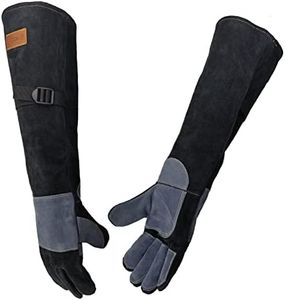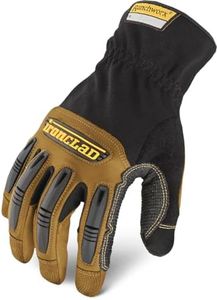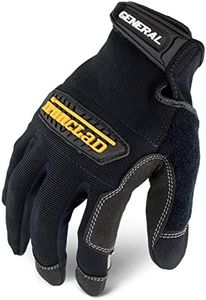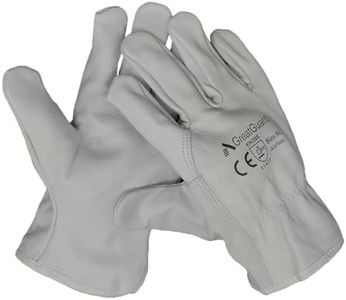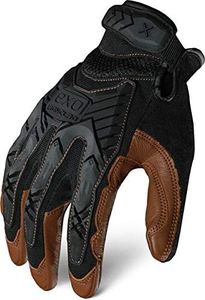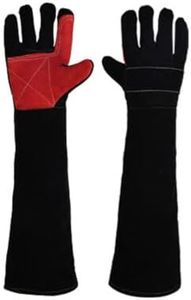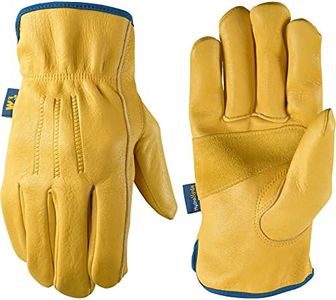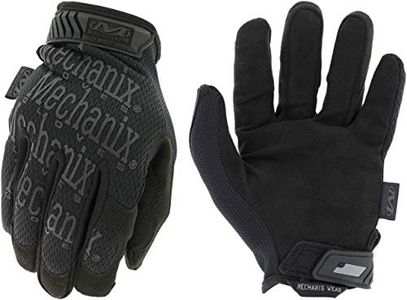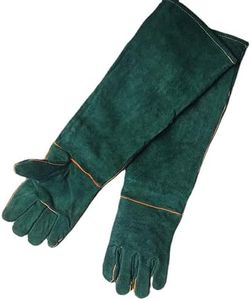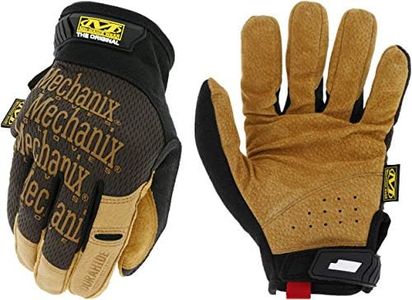We Use CookiesWe use cookies to enhance the security, performance,
functionality and for analytical and promotional activities. By continuing to browse this site you
are agreeing to our privacy policy
10 Best Leather Working Gloves
From leading brands and best sellers available on the web.Buying Guide for the Best Leather Working Gloves
Choosing the right leather-working gloves is essential for safety, comfort, and efficiency whether you're crafting, handling tools, or working with rough materials. Instead of grabbing the first pair you see, take some time to understand what your tasks require. Different gloves offer varying levels of protection, flexibility, and durability, so the best fit really depends on what activities you'll be doing most often. Knowing the key features to look for and how each one impacts your experience will help you confidently select gloves suited perfectly for your needs.Leather TypeLeather type is the kind of animal hide used to make the gloves, such as cowhide, pigskin, goatskin, or deerskin. This matters because each type balances durability, flexibility, and comfort differently. Cowhide is tough and abrasion-resistant, great for heavy-duty work but a bit stiff. Goatskin offers better flexibility and more sensitivity for your fingers, good if you need both protection and dexterity. Pigskin handles moisture well and stays soft even when wet, making it suitable for outdoor or damp conditions. Deerskin is soft and pliable, offering the most comfort but less ruggedness. Think about your tasks: choose tougher leathers for hard, rough work and softer leathers if you need to move your hands freely.
LiningThe lining refers to the material inside the gloves and determines the glove’s comfort, insulation, and sweat absorption. Unlined gloves allow more control and feel, making them suitable for tasks needing detailed handwork. Cotton or fleece linings add warmth, ideal for colder environments. Some linings are made to wick away moisture, keeping hands dry during extended use. If you work in a hot or climate-controlled space, a thin or no lining might be best, but for cold or rough conditions, a lined glove keeps your hands comfortable for longer periods.
Cuff StyleCuff style is how the glove fits around your wrist—common types include slip-on, safety cuff, or gauntlet cuff. Slip-ons are easy to put on and take off and good for lighter work or frequent glove removal. Safety cuffs are shorter, protect the wrist, and allow quick removal, especially suited for use around moving machinery. Gauntlet cuffs extend higher up the forearm, providing extra protection from sparks, heat, or abrasions, ideal for welding or similar heavy-duty jobs. Select your cuff style based on the hazards and level of protection you need, thinking about how much of your wrist and arm need coverage.
Fit and SizingFit and sizing indicate how well the gloves conform to your hands and how comfortable they’ll feel. Gloves that are too tight restrict movement and cause fatigue, while loose gloves can reduce control and even cause accidents. Most gloves come in small, medium, large, and extra-large, but actual hand measurements vary by brand. For precision tasks, a closer fit helps; for heavy-duty work, a slightly looser fit can accommodate thicker linings or allow better airflow. Always try the gloves on if possible and choose the snug but comfortable fit that lets you flex your hands freely without pinching.
Stitching and ConstructionStitching and construction refer to how the gloves are sewn together, which affects durability and comfort. Seamless or reinforced stitching makes gloves last longer and resist wear, while exposed seams can rub and irritate the skin after long use. Double stitching adds strength where gloves are used most, like palms and finger joints. If you need gloves for heavy or repetitive work, look for well-constructed seams—your hands will thank you after hours of wear.
Grip and Palm ReinforcementGrip and palm reinforcement are features added to the palm and fingers to improve how well you can hold onto tools or objects. Smooth gloves might slip, especially when working with slick or wet materials. Some gloves have rough textures or extra layers sewn in, making it easier to hold tools securely and protecting these high-wear areas from quick damage. If your work includes handling tools or slippery materials, palm reinforcement is a must for safety and glove longevity.
